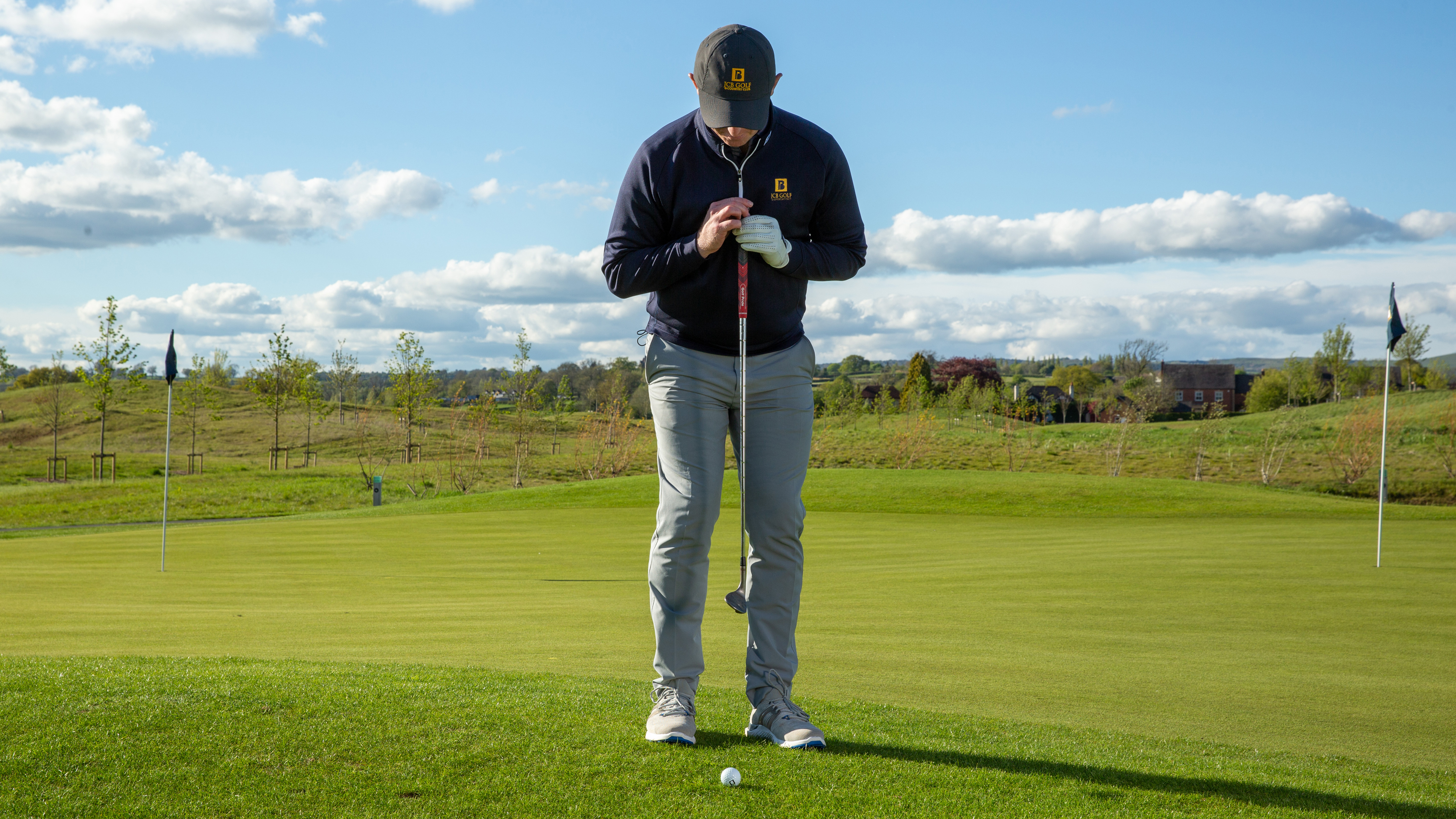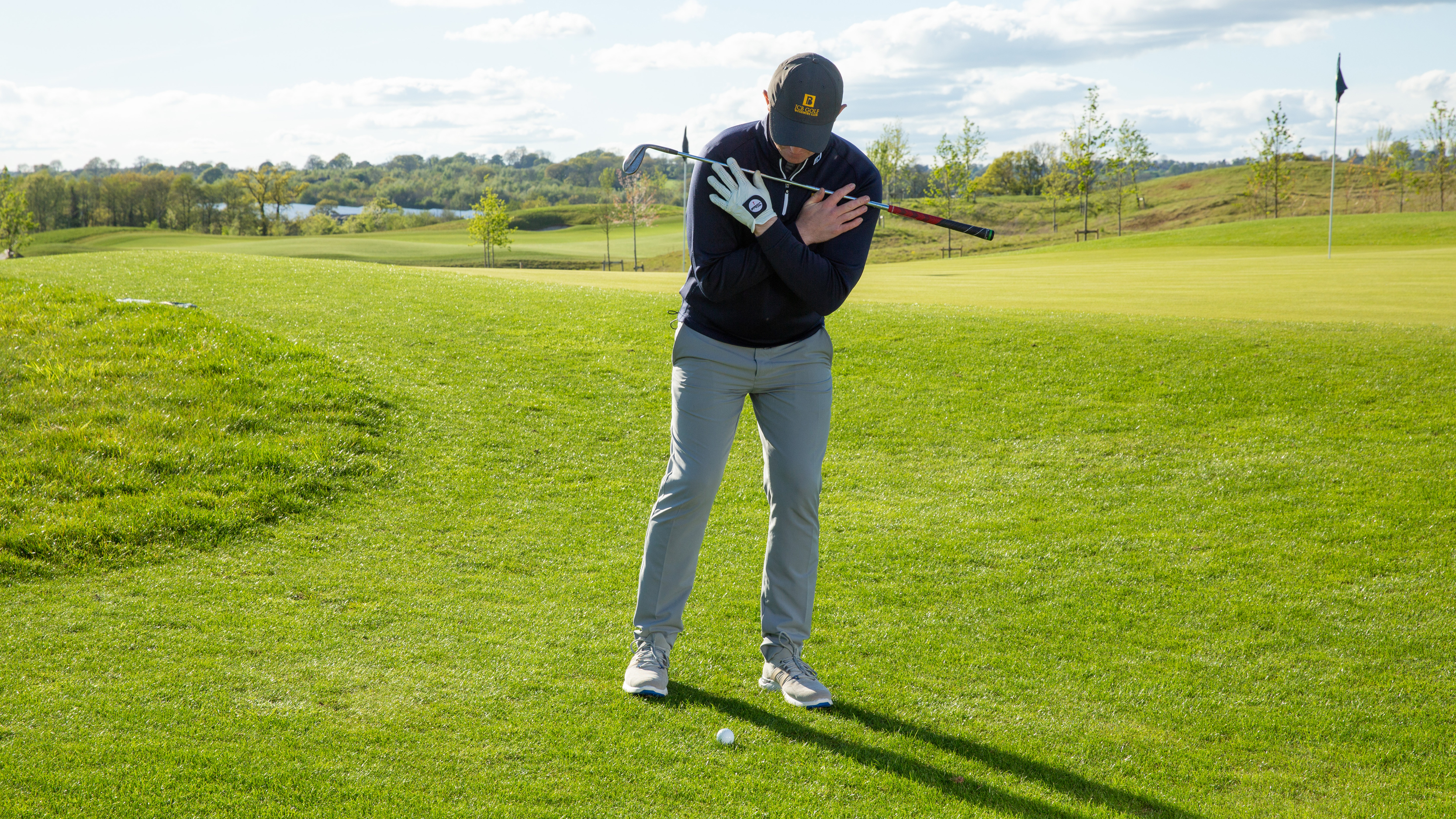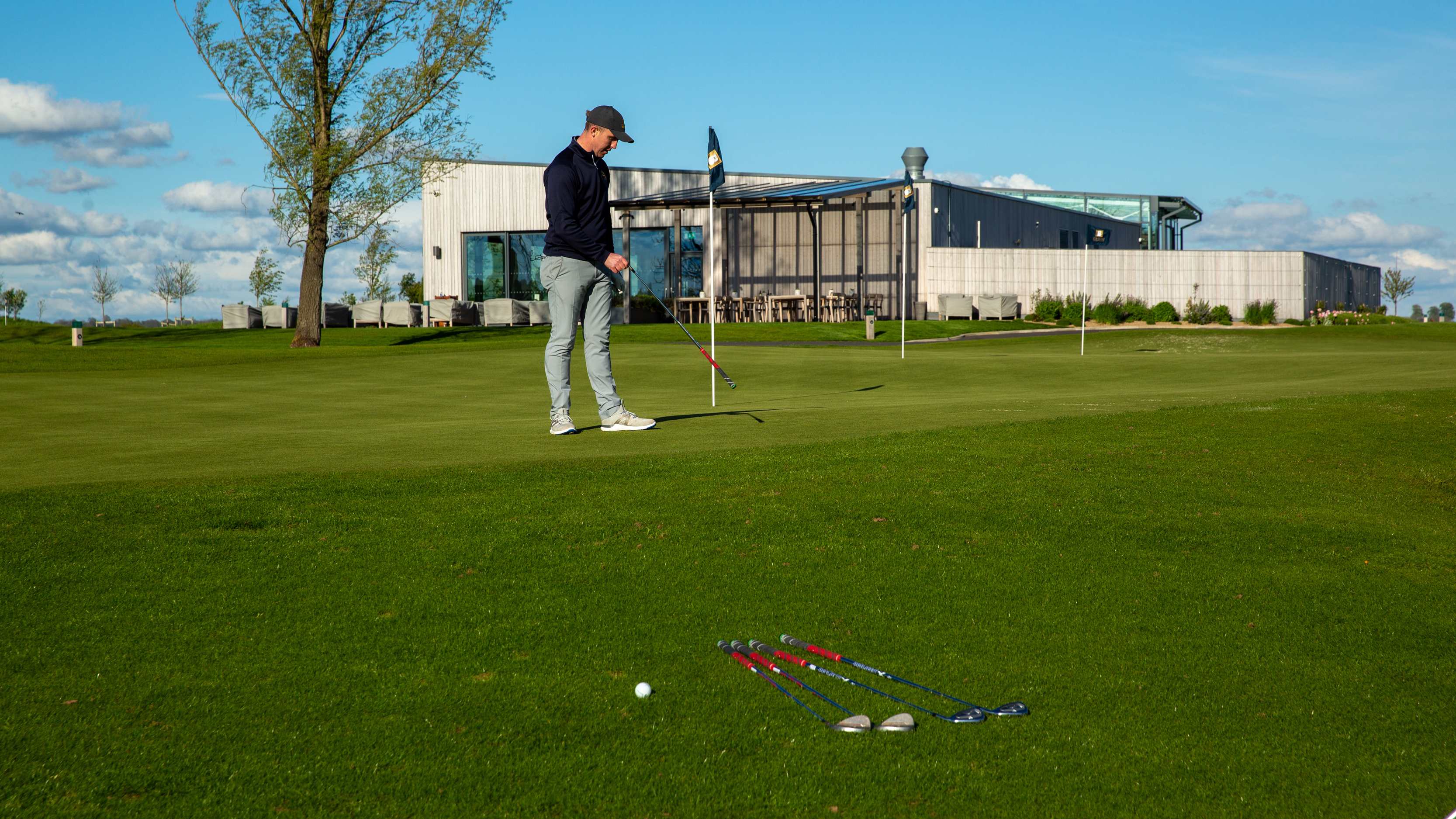Revolutionize Your Short Game With This PGA Pro Practice Routine
This simple short game practice routine, shared by PGA pro John Howells, will help you shoot lower scores and increase your confidence around the greens...


Sharpening up your short game is a great way to shoot lower scores, but how can amateur golfers improve with a wedge in hand? Finding the right practice routine is crucial, along with researching the best golf tips, and like anything in golf – you will only see results if you are willing to put in the time.
A common pitfall is that many amateurs get lured in by the desire to smash a bucket of balls down the range, instead of working on the key fundamentals of their short game.
In this video and article, Golf Monthly Top 50 Coach and PGA pro John Howells explains how a structured 60 minute short game session can be transformative for your performances around the greens...
First 15 Minutes
Start by focusing on technique, and specifically a couple of key concepts. The club should work around your body in a semi-circular fashion, just brushing the turf at impact. This helps to form a dependable, repeatable action that you can call on when it counts.

You want the body parts stacked on top of each other so that your shirt buttons are right above the ball
Much of it comes down to set-up, as you want to adopt a narrower stance when chipping. Ensure the ball position is around middle, and try to keep your weight relatively centred. Popular belief suggests that weight forwards is the way to go, but keeping everything in line helps to use the bounce on the wedge effectively. The same applies when playing shots from the bunker.
Find a comfortable grip and ensure the ball position remains as constant as possible (you may need to adapt this depending on the shot you want to play or the lie you have been given). The video above demonstrates a simple ball position drill that can help to improve your bunker pray.

Drawing a 'T' shape in the sand is a brilliant way to develop a consistent address position
Minute 15-30: Sloping Lies
Practicing from a flat surface is great, but the reality is you are unlikely to be so fortunate on the golf course. Being adaptable is important, and understanding how to navigate slopes could save you precious shots.
Subscribe to the Golf Monthly newsletter to stay up to date with all the latest tour news, equipment news, reviews, head-to-heads and buyer’s guides from our team of experienced experts.
From a downslope, for example, if you maintained the same technique as a flat lie the club will bottom out too early and you'll either hit a fat or thin shot.

It's vital to adjust your body so it is perpendicular to the slope
Instead, you want your body to be perpendicular to the slope so as to utilise the bounce again. The shot will naturally come out higher so choose your club accordingly based on the situation you're in.
From an upslope, the same applies in that your spine angle should be at 90 degrees to the ground. Make sure you put yourself in tricky positions during practice, as this will really help you on the course.
Minute 30-45: Distance Control
Once the technical kinks have been ironed out, it's time to focus on the shots themselves, and more importantly, becoming a master of distance control. Whether done by changing clubs or adjusting the length of swing with a trusty wedge, that's up to the individual, but we would advise ingraining three stock yardages into your repertoire.

Good short game practice should involve distance control - here's John picking eyeing up a landing spot
Focus on picking out a landing spot for each different distance and practise away. In time, you'll develop a feel for these shots that can be used on the course. Do the same from the bunker, once again controlling the variables. Alter the length of swing, how open the face is and the club selection if needs be but keep the set-up and amount of sand taken as constant as possible.
Final 15 minutes: Pressure Game
We've all felt the pressure on the course. Whether it's during a stroke play competition or in a weekly doubles match against friends, nobody is immune. By introducing an aspect of it into your practice, you'll be better equipped when it really matters.
This par-18 game is a simple way to achieve that. Play three short chip shots, three long chip shots and three bunker shots, holing out each time. The par is 18 (obviously) and the tour average is 21.
It's a great way to end a session as it recreates some of the feelings you experience on the course and gives you a target to try and beat each time.

Location: JCB Golf & Country Club
John joined the JCB Golf & Country club after spending seven years as the Senior Instructor at the Butch Harmon School of Golf Dubai. His coaching style is very much holistic in nature and TPI physical screenings are an integral part. John is able to identify physical limitations that may affect your swing and he has worked with the likes of Darren Clarke, Michael Hoey, Steve Webster and Rayhan Thomas.
Biggest influence:
Without a doubt the six years I spent working for Butch Harmon. I worked there from 2012 to 2018 and had the ability to everyday learn from one of the best modern instructors in the world today, Justin Parsons, who was my mentor and boss. We also were very fortunate to meet and learn from Claude Harmon III and Butch. The time spent in Dubai was the most pivotal because being surrounded by excellence was so inspirational for me as an instructor. I was able to frequently watch tour players practicing on site and working with their personal coaches, I was able to shadow coaches such as Sean Foley working with Danny Willet, Alan Thompson working with Tommy Fleetwood.
Greatest teaching success story: Working with Rayhan Thomas for three years as his putting coach was a pretty special opportunity for me. Seeing him go on to win his first professional tournament at the 2016 Mens Tour Dubai Creek open where he set a world record equalling nine birdies in a row.
Biggest challenge:
There is a new wave of golfers coming through the Bryson DeChambeau era and I am cautious about how many young golfers will attempt to play the game the same way as he does over the coming 10 years. We could see a lot of young talented golfers fall by the wayside either through injury or not being able to move the same way that Bryson does. I am really supportive of golfers pushing the boundaries of human physical performance so I admire what Bryson has been able to do, however I am apprehensive as to what this might be doing to the way young golfers see the game as a weightlifter/crossed with golfer/crossed with long drive champion.